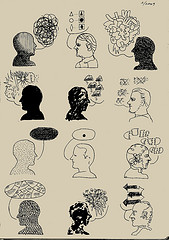Apr 17, 2010
Let’s Talk
 I’ve never been a big fan of the “reality is an illusion” perspective, though I certainly understand it.
I’ve never been a big fan of the “reality is an illusion” perspective, though I certainly understand it.
If we equate reality with our perception of reality, for example, then we are naturally deluded, for that perception is a product of our sense organs, our neurological infrastructure, and, I’m told, our race, class, and/or gender.
If, on the other hand, we say, “Reality is what is really there regardless of how it is perceived or whether it is even perceptible in the first place,” then we simply concede that our normal state of conscious awareness is, at best, a useful representation of the thing (reality) itself. That may not make it an outright delusion, but it at least makes it something like a practical hallucination.
The curious thing is that these hallucinations, these delusions, can be shared, even massively so (think of religions, nation states, the cult of celebrity, etc.). I would even go so far as to say that the process of sharing our delusions actually serves as a helpful corrective. We get closer to “what is really there” whenever we engage in a conversation with others concerning what seems to be there or what we assume to be there.
At least, that’s what my work as an independent professional (or, “thought ronin“), has taught me thus far.
If you want to get as close as possible to understanding what someone else wants, what they’re after, and how they would like you to help them, then you got to talk it out. And the more you talk it out, the more real everything gets. (I’m referring to actually talking here, conducting an email correspondence or swapping lengthy voice-mails does not count.)
Of course, sometimes you just don’t want to get real, finding the familiar cocoon of delusion far more comforting and far less vexing. But that’s another issue we should talk about.
Recent Comments